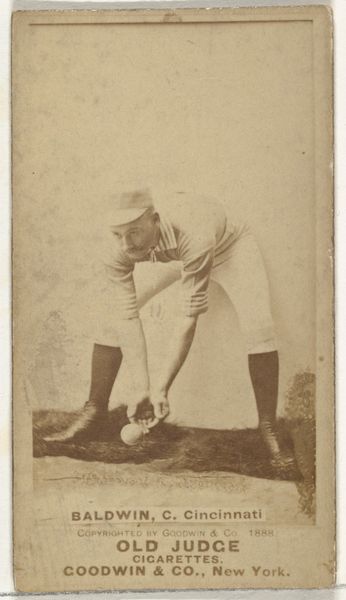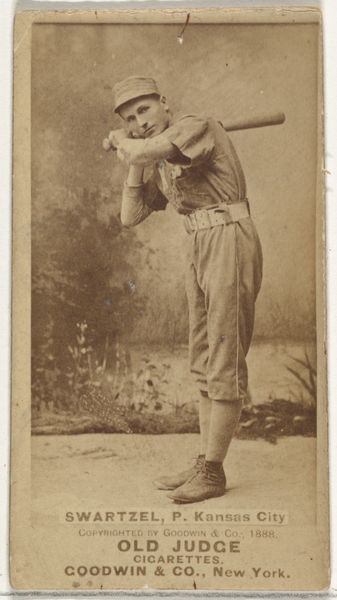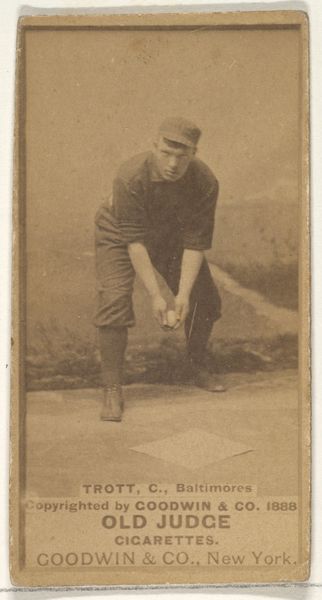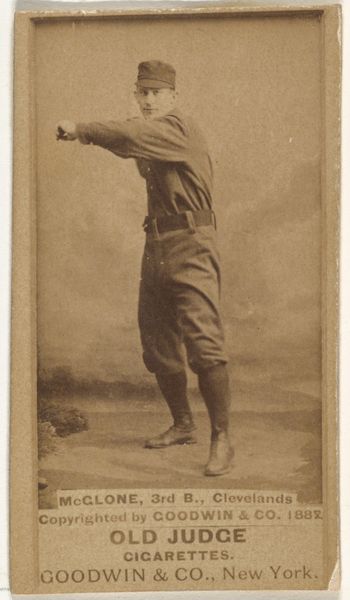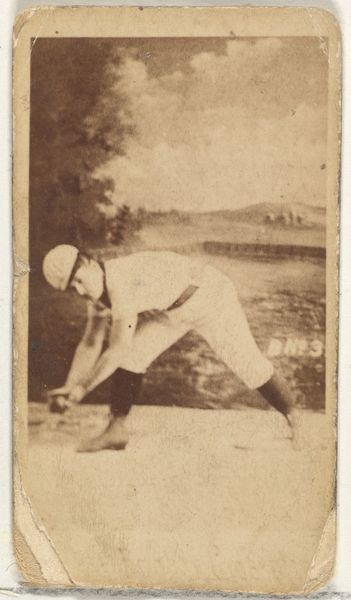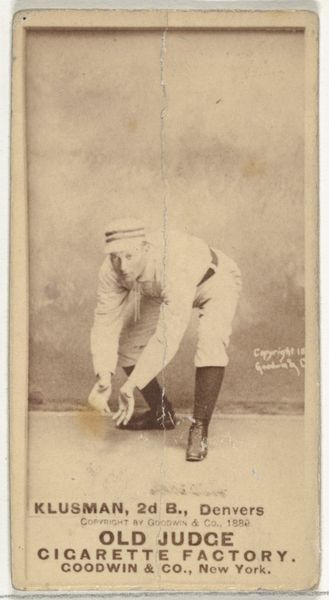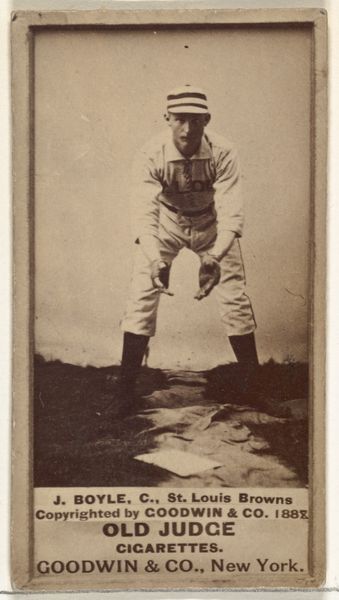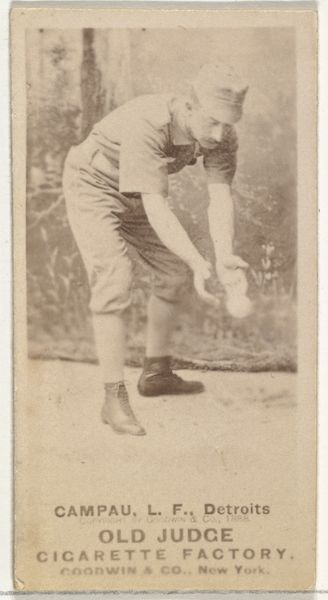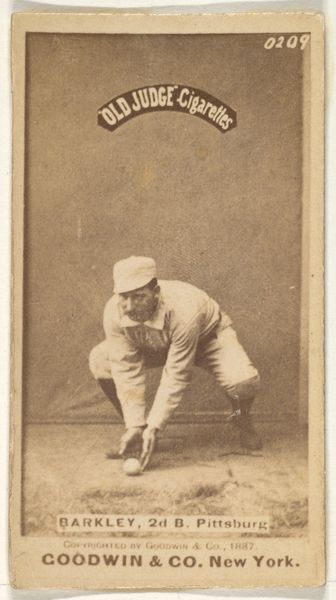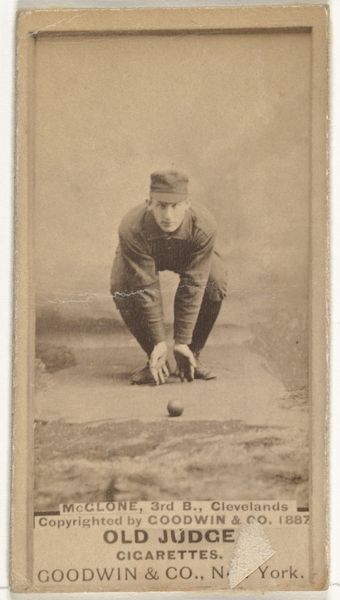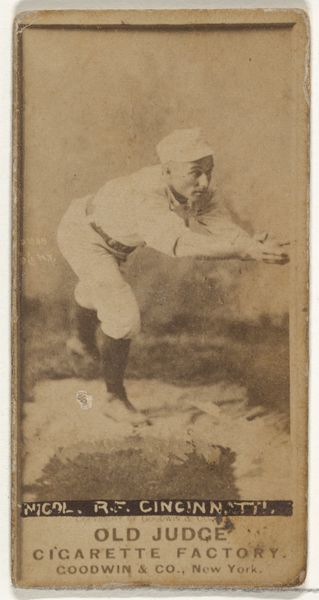
Frank Norris Graves, Catcher, Minneapolis, from the Old Judge series (N172) for Old Judge Cigarettes 1888
0:00
0:00
drawing, print
#
portrait
#
pencil drawn
#
photo of handprinted image
#
drawing
#
aged paper
#
toned paper
#
light pencil work
# print
#
pencil sketch
#
old engraving style
#
baseball
#
personal sketchbook
#
men
#
watercolour illustration
#
athlete
#
watercolor
Dimensions: sheet: 2 11/16 x 1 3/8 in. (6.9 x 3.5 cm)
Copyright: Public Domain
Curator: I'm immediately struck by the sepia tones; it's quite a muted image overall, invoking a sense of antiquity and simpler times. Editor: Exactly! This is “Frank Norris Graves, Catcher, Minneapolis,” a print from the "Old Judge" series, copyrighted in 1888 by Goodwin & Company. It depicts a baseball player, and what is truly remarkable, is its original function: an advertisement printed onto cigarette cards. Curator: Cigarette cards, yes. These small portable images circulated widely. It speaks volumes about the social values ascribed to sport at the time, using an athlete’s image to endorse a very different kind of product. And Graves, rendered here with that full beard… he's a symbol of virility, wouldn’t you say? An aspirational figure tied to the act of consumption. Editor: Absolutely. Look at the process: photo-to-print, a relatively nascent technology mass-producing images linked to addictive consumption, normalizing both the sport and the tobacco industry through each other. Also note the relatively poor image quality – it tells of mass production rather than careful curation. Curator: That ties into its symbolism even further. Think of baseball itself: It's about precision and physical prowess. To associate these qualities with cigarettes subtly suggests health benefits while clearly distracting the consumer from the negative effects. Editor: I wonder what materials were readily accessible, allowing for the distribution scale of such a promotional item, how the cardstock, ink pigments and paper influenced the print aesthetic? The mass-produced feel speaks directly to labour conditions and consumption at this moment in American history. Curator: And, on an immediate level, the image must have served as a powerful mnemonic device. Cigarette cards, like these, kept a sports figure like Graves circulating within a fan's memory… fueling the need to consume. He becomes a mythic character via repetitive exposure on something disposable. Editor: Precisely, we need to always examine the means through which such figures came to exist, looking not only at its immediate reception and consumption but the network of systems necessary for its proliferation! Curator: I'll admit, that's made me see the card in a more complex light. What started as a fairly simple sepia portrait now seems like a nexus of intersecting social and industrial narratives. Editor: And perhaps by tracing those networks and labour conditions, we gain better insights to current and future material practices and their societal influence!
Comments
No comments
Be the first to comment and join the conversation on the ultimate creative platform.
